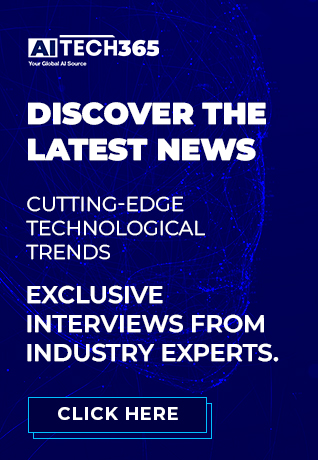OpenAI announced the release of GPT-5.1 on its API platform the next model in the GPT-5 series designed to strike a better balance between intelligence and speed for a wide range of agentic and coding tasks.
The key features of GPT-5.1 include:
- Adaptive reasoning: GPT-5.1 dynamically adjusts how much “thinking” or internal token-usage it devotes according to task complexity. On easier tasks it uses fewer tokens and responds faster; on tougher tasks it still engages deeper reasoning.
- “No reasoning” mode: A new mode (via reasoning_effort = ‘none’) enables the model to skip deeper reasoning when not required, thus reducing latency in time-sensitive tasks.
- Extended prompt caching: Prompts can now remain in cache for up to 24 hours, letting follow-up interactions draw on cached context. This reduces cost and latency in multi-turn workflows such as iterative coding, knowledge retrieval, or chat-based developer tooling.
- New tools for developers: The introduction of an apply_patch tool (for code edits via structured diffs) and a shell tool (for executing shell commands locally via the model’s suggestions) gives developers more direct control and integration of GPT-5.1 into code and infrastructure workflows.
- Performance improvements: In tests, GPT-5.1 reportedly ran 2-3× faster than GPT-5 in certain evaluations, with fewer tokens used for similar or better quality.
OpenAI notes that GPT-5.1 and its chat variant (gpt-5.1-chat-latest) are now available to all paid-tier API developers, with the same pricing and rate limits as GPT-5.
Implications for the DevOps Industry
The DevOps field encompassing automation, continuous integration/continuous deployment (CI/CD), infrastructure as code, monitoring, and feedback loops is among the industries most sensitive to improvements in tooling, speed, and reliability. The introduction of GPT-5.1 brings several implications:
- Faster feedback loops
With GPT-5.1’s reduced latency and “no reasoning” mode, automation workflows that rely on an LLM component (for example: code generation, policy compliance checks, infrastructure drift detection) can respond more quickly. Within CI/CD pipelines, a tool powered by GPT-5.1 could complete its checks or code-patch suggestions faster, thereby reducing pipeline bottlenecks and improving release velocity. - Improved code editing and infrastructure interaction
The add-on of the apply_patch and shell tools means that GPT-5.1 can more reliably generate structured code edits and interact with local environments. For DevOps teams, this opens new possibilities:- Automated patch generation for infrastructure as code (IaC) templates (Terraform, Ansible, etc).
- Script or command generation to remediate drift or misconfiguration.
- Integration of the model in “chatops” workflows where DevOps engineers converse with bots that can inspect logs, run commands, apply fixes.
This raises the bar for automation: rather than simply suggesting code, the model can propose diffs and even orchestrate shell commands (subject to proper tooling/guardrails).
DevOps teams can now treat GPT-5.1 as a more autonomous agent in the pipeline, which could shift how automation frameworks are designed.
- Cost and token-efficiency improvements in pipeline automation
DevOps workflows often call models repeatedly (e.g., for incremental changes, monitoring alerts, incident triage). The extended prompt caching (24 h retention) means follow-up interactions can reuse recent context without paying full token cost each time. This makes LLM-based automation in DevOps more cost-effective and efficient. Lower latency for follow-ups means more fluid interaction in live incident response or real-time system monitoring. - Higher reliability in critical tasks
Because GPT-5.1 adapts its reasoning depth, it can modulate between speed and accuracy. In DevOps, there are two types of tasks: low-latency but low complexity (e.g., notify alert, run simple script) and high-complexity but high-risk (e.g., root cause analysis of system failure, provisioning new cluster). GPT-5.1’s ability to allocate reasoning effort accordingly means that it becomes more trustworthy for higher-stakes automation, while still efficient for simple tasks. That improves the viability of LLM-backed automation for production-critical infrastructure operations. - New possibilities for “agentic” DevOps assistants
With improved agentic capabilities (i.e., models that act more proactively than simply respond) and tooling support, DevOps teams might see new classes of “DevOps agents” or “pipeline bots” that do more than trigger workflows they can inspect, propose, apply, validate. This could change how teams are organised: automation will likely move from static scripts toward dynamic agents integrated in the deployment lifecycle.
Also Read: Snowflake Unveils Developer Tools to Supercharge Agentic AI Development – What It Means for DevOps and Business
Impact on Businesses Operating in the DevOps Space
From a broader business perspective companies offering DevOps services, SaaS providers, consultancies, infrastructure operators seeing GPT-5.1 in the market means:
- Competitive differentiation: Firms that integrate GPT-5.1 into their offerings (e.g., managed CI/CD platforms, DevOps toolchains, monitoring & observability products) can market faster, more intelligent automation and lower cost operations. Early adopters gain an advantage.
- Cost savings and operational efficiency: By using GPT-5.1 to streamline repetitive or low-value tasks (patch generation, incident triage, script automation), businesses may reduce human-hours spent on manual DevOps housekeeping. Over time, this can shift resource allocation toward strategic work (architecture, reliability engineering) rather than grunt automation.
- Service model evolution: DevOps consultancies may re-architect their service delivery: instead of purely human-led operations, they offer hybrid models where GPT-5.1-powered agents handle standard workflows, humans intervene for edge cases. This can scale service delivery and margin.
- Tool productisation and bundling: DevOps tool vendors may build GPT-5.1-powered assistants or features (e.g., auto-patching IaC, live shell-command generation, drift remediation bots). This expands the product set and may drive demand for more integrated platforms over siloed tools.
- Risk and governance considerations: With models acting more autonomously in infrastructure, businesses must ensure strong safeguards: authorization, audit trails, rollback capabilities, logging. DevOps teams must update governance frameworks to manage the increased autonomy of agents like GPT-5.1.
- Training and skill shift: DevOps engineers may need to acquire new skills prompt engineering, agent orchestration, model-tool integration as tasks shift from manual scripting toward supervising LLM-driven workflows. This changes hiring/training practices.
Conclusion
The launch of GPT-5.1 marks a meaningful step in the evolution of large-language models particularly for coding, automation and tool-integration use cases. For the DevOps industry, this opens a path to smarter, faster, more cost-efficient automation, enabling agents that can patch, shell, reason and adapt.
Businesses operating in the DevOps space stand to gain through improved efficiency, new service models, and competitive differentiation but they must also adapt governance, tooling and skills to manage a more autonomous automation landscape.





